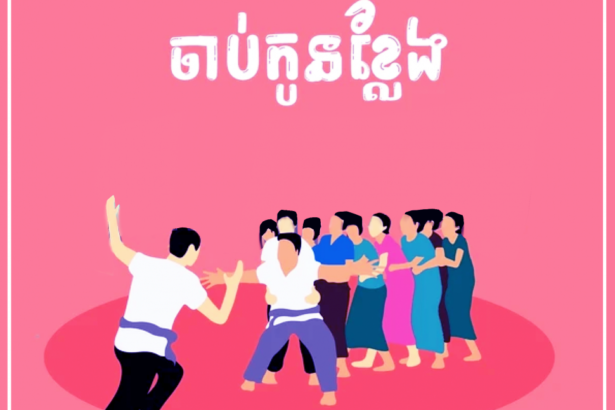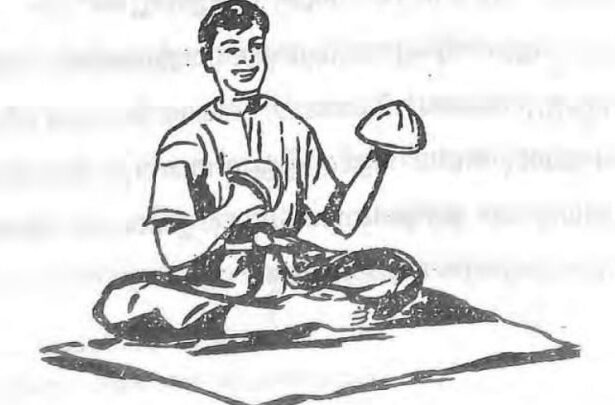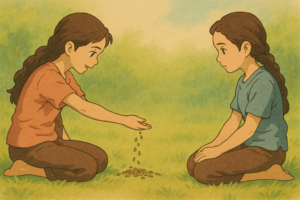
Our ancestors have left behind many folk games for future generations to play during various festivals to create fun and increase mutual relationships. There are many Khmer folk games such as the King Game (Sdach Jang), Teanh Proat, Leak Kon Saeng, Choul Chhoung, Jarb Kon Klaeng Game, etc.
Among all these games, the Pork Jarb Game “ល្បែងប៉ក់ចាប” is a Khmer folk game played by Cambodia boys and girls. This game mostly played by young herdsmen after they let their herds to graze in the fields, in terms of morning or evening time. And, they mostly play under the large tree.
How to play
First, there are two persons or more. They need 5 or 10 pebbles per person, but the number is not fix from 5 to 10, it depends on the agreement of both players. However, they normally limit to 5 pebbles per player. This game is played in stages: Hide, Guess, Throw up, Winner or Loser.
- Hide: when the players and the tools is ready, the players have to sit in opposite direction. One hand is gripping the pebbles, the other hand is leaving free. They hide the pebbles with both hands behind their backs, and the pebbles were carefully placed on the bare hand (it is up to everyone’s choice) without letting any of the players know, the hands holding the new pebbles were held tightly closed and placed in front of each other.
- Guess: When everyone was finished hiding, they started guessing. Scenario 1: Suppose that the first person guesses 3, the second person guesses 5. Then, they all open their hands, count the pebbles, and see that the first person has 1 pebble and the second person has 3 pebbles. The total number of pebbles hidden by both of them is 4 pebbles, so the two people’s guesses are all wrong. They have to start the game again. Scenario 2: If the first person guesses 5, the second person guesses 3. Then, they all open their hands, count the pebbles, and see that the first person has 2, the second person has 3. The total number of pebbles between the two is 5, so in this case the first person guesses correctly, the first person must collect all the pebbles from the second person and put them together with all of their own pebbles.
- Throw up: The first player puts all the pebbles in one hand (palm) and gently throw them up with single hand (if they promise to play with both hands, they use both hands, but if they promise to play with only one hand, they use only one hand) to prevent them from scattering. Then, they collect all the pebbles to the back of their hand. Supposing that they collect 4 pebbles and throw the 4 pebbles up again, then collect them with the palm of your hand. When you catch them without dropping them, it is called “getting 4 pebbles”. If some fall out, it is called “Vomiting (K’out or ក្អួត)”. Meaning that the first player is dead, and not getting any pebbles at all, so he gives all the pebbles to the second player to throw again. Then, the second player also starts to throw up like the first player. Supposing that the second player throws up without vomit and gain 3 pebbles, then there are only 7 balls left. The first player collects these 7 pebbles and throws again. Supposing that you get 4 pebbles, so there are only 3 pebbles left. The second person takes these 3 pebbles and throws them. Supposing that the second person throws up and get all 3 pebbles at once, so there are no balls left.
- Winner or Loser: the above result, the first player only scored 4 pebbles, while the second player scored 6 pebbles. So, the first player is 1 pebble short, the second player is 1 pebble over, and the first player has to borrow one pebble from the second player to make up for the 5 pebbles as determined from the beginning and start the game again. After the first game, it turns out that the first player owes the second player 1 pebble. If he plays again, the first player owes him 2 or 3 more pebbles and cannot repay him. When he owes him 10 pebbles, he must be punished because in this game, they can owe up to 10 pebbles. If he was punished once, he loses one round. But if the first player scores more pebbles than the set number, he can pay back to the second player. The pebbles that are paid is called settle down. The punishment is to knock on the knee with the hand. There are two types of knocking: hard knocking and soft knocking. If it is a soft knocking, you knock lightly 11 or 15 times. After the knocking, they start playing again, and they play in this way until they stop.
This game is played for entertainment, as well as to train the mind to recognize the tolerance of the general public for hypocrisy or other secrets.
Gallery
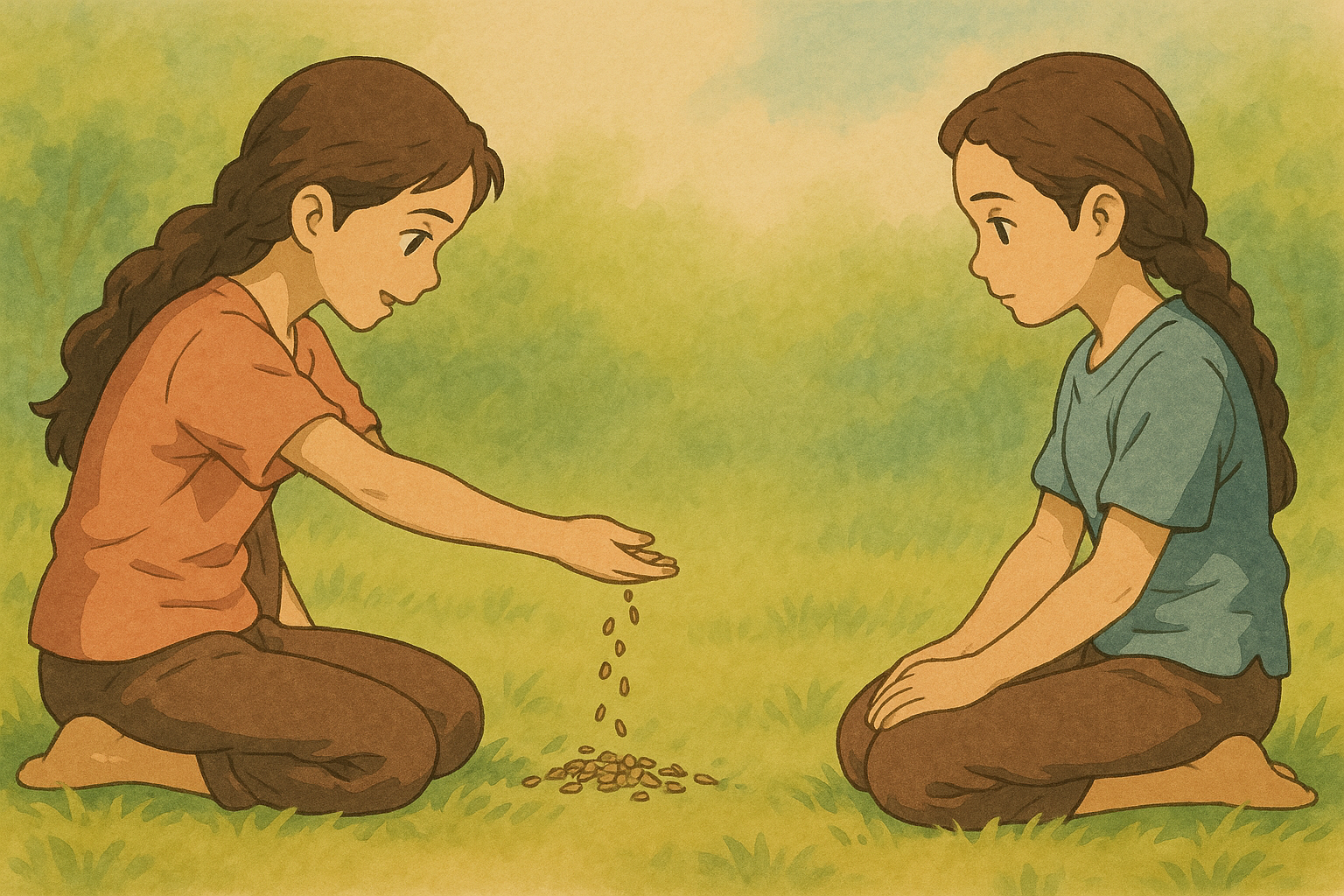 Pork Jarb Game © Buddhist Institute 1964 and ChatGPT Image
Pork Jarb Game © Buddhist Institute 1964 and ChatGPT Image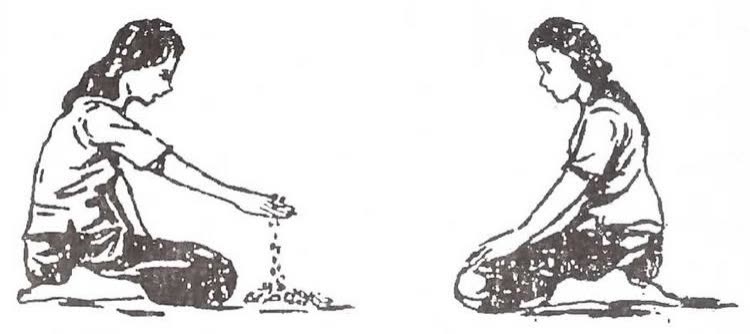 Pork Jarb Game © Buddhist Institute 1964
Pork Jarb Game © Buddhist Institute 1964
